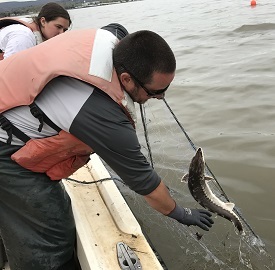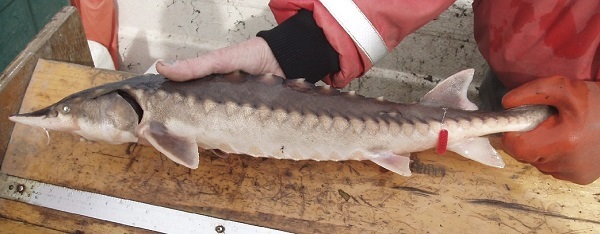DEC Counting Young Atlantic Sturgeon
The New York State Department of Environmental Conservation sent this bulletin on 02/26/2019 09:58 AM EST |
| DEC Delivers - Information to keep you connected and informed from the NYS Department of Environmental Conservation |
| Share or view as a web page || Update preferences or unsubscribe |
Hudson RiverNet
|
|
Since 2003, fish biologists in DEC's Hudson and Delaware Marine Fisheries unit have been studying the population, life cycle, and habitats of the endangered Atlantic sturgeon in order to manage and conserve this signature species. Sturgeon spawned in the Hudson spend one to six years in the river before they migrate to the ocean. Annual counting and tagging of these young sturgeon help determine how the relative abundance is changing over time. By analyzing several years worth of catch data, biologists can begin to see trends in the Hudson River stock. Is it stable? Increasing? Decreasing? The Juvenile Atlantic Sturgeon takes place in March through early May in Haverstraw Bay, an overwintering area for these young fish. Research shows the combination of soft, river-bottom sediments and deeper water (more than 20-feet) is ideal for juvenile Atlantic sturgeon.
|


